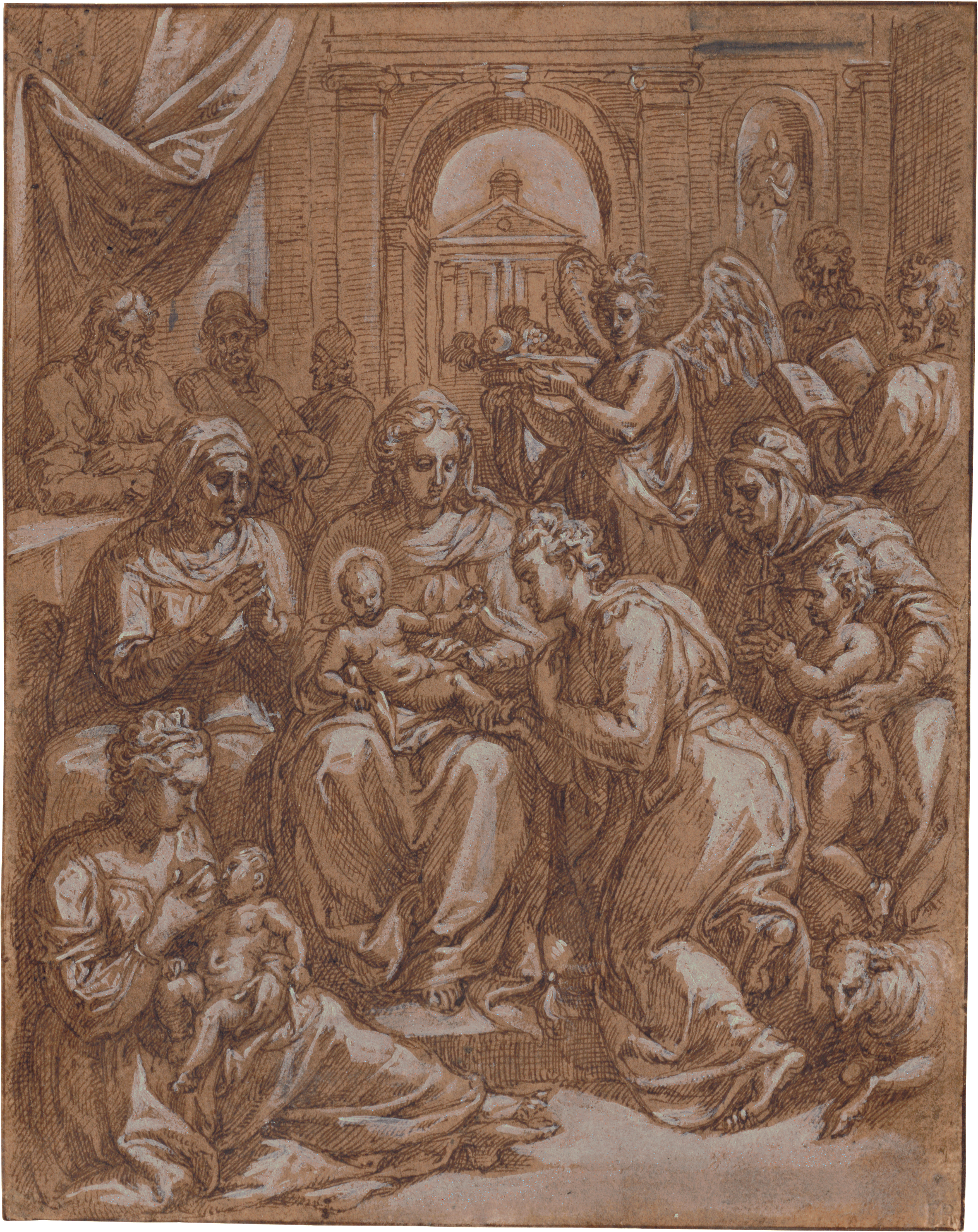Loading the page ...
Crispijn van den Broeck
(known as Paludanus, circa 1522/35 Mechelen – after 1588 Antwerp)
The Holy Kinship (The Mystical Marriage of St. Catherine of Alexandria). Pen and brown ink over graphite, on brown grounded paper, white heightening. 18.5 x 14.5 cm. Circa 1576.
This brilliant composition is remarkable for its meticulous and masterly execution. Although working in a relatively small format, the artist has nonetheless succeeded in blending the large number of protagonists together in a compositionally compelling and coherent whole. The visually concise and very effectively applied white heightenings demonstrate the artist’s great skill and give the composition a considerable degree of liveliness and great formal depth. No less enchanting is the richness of the detail. Crispijn has observed the actions of the various protagonists with loving attention. St. Catherine humbly receives the engagement ring from the hands of the Christ Child, while St. Elizabeth protectively embraces the boy John the Baptist. Dignified male figures lost in thought or reading the Holy Scriptures can be seen in the background. An angel is carrying a bowl full of fruit. In the background on the left is a man dressed in contemporary costume, who is reverently contemplating the supernatural event. Has the artist depicted himself here?
The drawing served as the design for an engraving in reverse made by Crispijn’s daughter, Barbara van den Broeck (The New Hollstein, Crispijn van den Broeck, Part I, 149). A simple engraved border frames the engraved version. The engraving by Barbara van den Broeck follows the original drawing very closely, while a second reproductive print by Hans Collaert the Elder (The New Hollstein 148) with a grotesque border and a detailed legend appears a little less focused and should
probably be regarded as a copy after Barbara’s version.
Around 1550 the painter and draughtsman, Crispijn van den Broeck, was apprenticed to Frans Floris in Antwerp, where he became a member of the Guild of St. Luke in 1555/56. Apart from a brief interruption Crispijn lived and worked until his death in 1591 in Antwerp, where the present drawing probably arose.
Contact us for further information